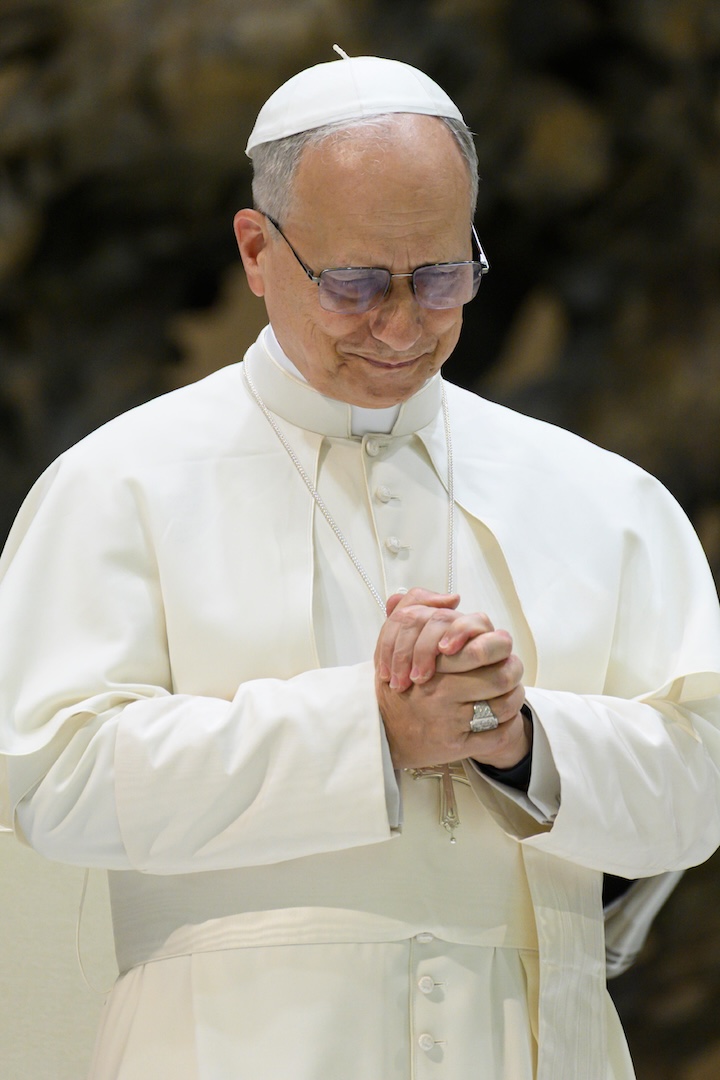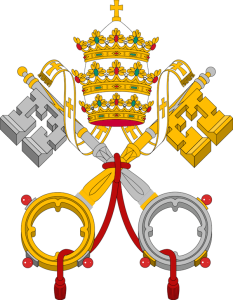Dilexi Te Summary
by CAPP-USA
Listen to the Podcast
Don’t have time to read? Listen to this AI-powered Dilexi Te summary.
EP. 3 - Dilexi Te Summary

Dilexi Te teaches the Church’s enduring love of the poor, and our responsibility to them.
Apostolic Exhortation “Dilexi Te” on Love for the Poor
Dilexi Te, begun by Pope Francis in the final months of his life and promulgated by Pope Leo XIV, affirms that love for the poor is not optional but a path to holiness and a constitutive dimension of the Church’s identity and mission. Rooted in Scripture, the Church Fathers, and the witness of the saints, it emphasizes that the poor reveal Christ’s presence and embody the “preferential option for the poor.”
The document challenges both individuals and institutions to confront the “structures of sin” that perpetuate poverty, inequality, and a “throwaway culture.” The poor are not passive recipients of aid but active agents of evangelization and renewal. Dilexi Te calls Christians to personal encounter, structural change, and solidarity, urging the Church to be a “poor Church for the poor” whose credibility is measured by concrete love, justice, and action.
Summary
Dilexi Te emerges at a critical moment—amid rapid technological change, social fragmentation, and widening inequality—when the Church’s prophetic voice on behalf of the poor is urgently needed.
The document asserts that in the poor and suffering, the Church recognizes the face of her crucified Lord, Jesus Christ, making the “option for the poor” a fundamental tenet of faith. Drawing deeply from Sacred Scripture, the Church Fathers, and the witness of the saints, Dilexi Te shows that God’s plan of salvation is marked by a special concern for the lowly, the marginalized, and the oppressed. This divine preference, embodied in the “poor Messiah,” reveals the very heart of God’s compassion for all humanity.
Beyond individual acts of mercy, the exhortation calls for a profound change in mentality to confront the “structures of sin” that create and perpetuate poverty. It denounces economic ideologies that absolutize market autonomy at the expense of human dignity, giving rise to inequality; a “throwaway culture”; and the “dictatorship of an economy that kills.” The poor are not passive recipients of aid but active agents of evangelization and renewal, possessing a wisdom capable of converting the Church and society. Institutions are urged to listen to and collaborate with popular movements and the poor themselves in the struggle for justice and dignity.
Ultimately, Dilexi Te is an urgent call to conversion and action, summoning Christians to overcome indifference and to see Christ in the “suffering flesh” of the poor. It reaffirms the value of almsgiving and personal encounter while demanding structural change. A Church faithful to the Gospel must be a “poor Church for the poor,” whose credibility is measured by concrete love, justice, and solidarity.
I. Foundational Principles
A. DOCUMENT ORIGIN AND CENTRAL MESSAGE
Leo XIV’s promulgation affirms the Church’s ongoing commitment to a “poor Church for the poor,” linking the papacies of Francis, Benedict XVI, and John Paul II in continuity with the great social encyclicals from Rerum Novarum to Fratelli Tutti.
While preserving Pope Francis’s passion for the marginalized, Pope Leo XIV situates this concern within a broader theological vision that unites spiritual conversion, ecclesial renewal, and social transformation, emphasizing the Eucharistic roots of charity and the central role of Catholic Social Teaching’s principles.
The document asserts that in the poor and suffering, the Church recognizes the face of her crucified Lord, Jesus Christ, making the “option for the poor” a fundamental tenet of faith.
The title is taken from the Book of Revelation (cf. 3:9), where the Lord tells a powerless Christian community, “I have loved you.” This declaration is extended to the poor, affirming their dignity despite their lack of influence or resources. The document’s purpose is to insist on the “close connection between Christ’s love and his summons to care for the poor” (Dilexi Te, 3) as an essential path to holiness.
“In this call to recognize him in the poor and the suffering, we see revealed the very heart of Christ, his deepest feelings and choices, which every saint seeks to imitate.” (Dilexi Te, 3)
B. THE INSEPARABLE BOND: LOVE OF GOD AND LOVE OF THE POOR
A core thesis of the document is the unbreakable unity between love for God and love for the poor. It posits that contact with the lowly and powerless is a fundamental way of encountering Christ. This is not a matter of “mere human kindness but a revelation.” (Dilexi Te, 5) This identification is so complete that Christ says he himself experiences hunger, thirst, nakedness, and imprisonment in the person of the poor. (cf. Mt 25:35-36)
- Christ’s Identification with the Poor: The exhortation grounds this principle in Jesus’s own words: “Just as you did it to one of the least of these brothers and sisters of mine, you did it to me”. (cf. Mt 25:40)
- An Enduring Presence: Just as Jesus promised his disciples, “I am with you always”, (cf. Mt 28:20) He also stated, “The poor you will always have with you” (cf. Mt 26:11) linking his presence to the presence of the poor.
- The Example of Saint Francis: The choice of the name “Francis” by the previous pontiff was inspired by the plea, “Do not forget the poor!” This mirrors the appeal made to Saint Paul (cf. Gal 2:10) and the life of Saint Francis of Assisi, who was converted through his encounter with a leper, seeing Christ in him.
C. THE CRY OF THE POOR AND THE MULTIFACETED NATURE OF POVERTY
Dilexi Te presents the condition of the poor as a constant “cry” that challenges individuals, societies, and the Church. This cry echoes God’s own words to Moses regarding the Israelites in Egypt: “I have heard their cry… I have come down to deliver them” (cf. Ex 3:7-8). To be unresponsive to this cry is to “turn away from the very heart of God.” (Dilexi Te, 8)
1. Many Forms of Poverty
Poverty is described as a multifaceted phenomenon with many forms:
- Material: Lack of subsistence.
- Social: Marginalization and lack of voice.
- Moral and Spiritual: A dimension of poverty beyond the material.
- Cultural: Lack of access to cultural resources.
- Personal/Social Weakness: Conditions of fragility.
- Lack of Rights: The poverty of those without freedom or legal standing.
Dilexi Te warns against a culture that “discards others without even realizing it” (Dilexi Te, 11) and tolerates the suffering of millions. It highlights the growing inequality where a “wealthy elite” lives in a bubble, disconnected from the increasing poverty even in affluent nations. Special attention is given to women, who are “doubly poor” when they endure exclusion, mistreatment, and violence.
The document warns against “ideological prejudices”—false justifications Christians use to avoid serving the poor, (Dilexi Te, 13-15), including: the “specious view of meritocracy”; claims that poverty is chosen or deserved; and dismissal of charitable works as obsessions rather than the Church’s mission.
II. Theological Foundations: God’s Preferential Option for the Poor
A. GOD’S CHOICE IN SCRIPTURE
The exhortation speaks of a “preferential option on the part of God for the poor,” an expression integrated into Church teaching that emphasizes God’s compassionate action towards the weak. This preference does not imply exclusivity but rather shows that God “has a special place in his heart for those who are discriminated against and oppressed.” (Dilexi Te, 16)
- Old Testament Witness: The Old Testament repeatedly presents God as the friend and liberator of the poor, who hears their cry (cf. Ps 34:7) and denounces injustice through the prophets like Amos and Isaiah.
- The Inseparability of Worship and Justice: The prophets taught that prayer and sacrifice are meaningless if the poor are oppressed.
B. JESUS, THE POOR MESSIAH
The history of God’s preferential love culminates in Jesus of Nazareth, who “emptied himself, taking the form of a slave”. (cf. Phil 2:7)
- Poverty in Christ’s Life:Poverty and exclusion marked every stage of Jesus’s life: His birth in a manger, his flight to Egypt, his itinerant ministry where he had “nowhere to lay his head” (cf. Mt 8:20), and His death as an outcast.
- Messiah of and for the Poor: Jesus’s public ministry began with the declaration from Isaiah: “The Spirit of the Lord is upon me, because he has anointed me to bring good news to the poor”. (cf. Lk 4:18) His proclamation “Blessed are you poor, for yours is the kingdom of God” (cf. Lk 6:20) signifies God’s preference.
C. MERCY AND JUDGMENT
Dilexi Te underscores that love for one’s neighbor is the tangible proof of authentic love for God. This principle culminates in the Parable of the Last Judgment, (cf. Mt 25:31-46) which is presented as the ultimate standard for Christian life.
“If we seek the holiness pleasing to God’s eyes, this text offers us one clear criterion on which we will be judged… Our Lord made it very clear that holiness cannot be understood or lived apart from these demands.” (Dilexi Te, 28)
The Letters of James and John are also cited to reinforce that faith without works of mercy is “dead”, (cf. Jas 2:17) and God’s love cannot abide in one who sees a person in need and “refuses help”. (cf. 1 Jn 3:17) The exhortation insists that this message is “so clear and direct, so simple and eloquent, that no ecclesial interpretation has the right to relativize it.” (Pope Francis, 194)
III. Historical Witness: A Tradition of Serving the Poor
Chapter Three provides a sweeping overview of the Church’s two-millennia history of caring for the poor, presenting it as an unbroken tradition and an essential part of her identity.
| Era / Movement | Key Figures / Orders | Core Contribution | Key Quote / Concept |
| Early Church & Fathers | St. Stephen, St. Lawrence, St. Ignatius of Antioch, St. John Chrysostom, St. Augustine | Established care for the poor as central to faith, liturgy, and salvation. The poor are the “treasures of the Church.” | “What you give to the poor is not your property, but theirs. Why have you appropriated what was given for common use?” – St. Ambrose (43) |
| Care for the Sick | St. John of God, St. Camillus de Lellis, Daughters of Charity, numerous women’s congregations | Founded hospitals and orders dedicated to serving the sick with “maternal affection,” recognizing Christ in the suffering. | “Touch the suffering flesh of Christ.” (49) |
| Monastic Life | St. Basil the Great, St. Benedict of Norcia, St. Bernard of Clairvaux | Integrated hospitality and care for the needy into contemplative life. Monasteries became centers of refuge, work, and education. | “The poor and pilgrims are to be received with all care and hospitality, for it is in them that Christ is received.” – Rule of St. Benedict (55) |
| Liberation of Captives | St. John of Matha (Trinitarians), St. Peter Nolasco (Mercedarians) | Founded orders with the specific charism of freeing enslaved Christians, even offering their own lives in exchange. |
Gloria tibi Trinitas et captivis libertas (Glory to you, O Trinity, and liberty to the captives). (60) |
| Mendicant Orders | St. Francis of Assisi, St. Clare of Assisi, St. Dominic de Guzmán | Revolutionized consecrated life by embracing radical poverty, becoming poor with the poor and living among them as a prophetic sign. | Brothers “should not appropriate anything…serving the Lord in poverty and humility, they should go about begging with confidence.” – St. Francis (64) |
| Education of the Poor | St. Joseph Calasanz, St. John Baptist de La Salle, St. John Bosco | Founded congregations to provide free education to poor children, seeing knowledge as a tool for liberation and dignity. | Education as an act of justice and one of the “highest expressions of Christian charity.” (68) |
| Accompanying Migrants | St. John Baptist Scalabrini, St. Frances Xavier Cabrini | Established missions to provide spiritual and material assistance to millions of emigrants, seeing them as recipients of a new evangelization. | Response summarized in four verbs: “welcome, protect, promote and integrate.” (75) |
| Serving the “Least” | St. Teresa of Calcutta, St. Dulce of the Poor | Embodied total dedication to the “poorest of the poor” — the dying, destitute, and discarded — recognizing their immense dignity. | “The poor… do not need our pity and sympathy, they need our understanding love. They need our respect; they need that we treat them with dignity.” – St. Teresa of Calcutta (77) |
B. PRACTICAL THEOLOGY WITHOUT EMPTY WORDS
This historical witness demonstrates that “patristic theology was practical, aiming at a Church that was poor and for the poor, recalling that the Gospel is proclaimed correctly only when it impels us to touch the flesh of the least among us, and warning that doctrinal rigor without mercy is empty talk”. (Dilexi Te, 48)
C. LIBERATION OF CAPTIVES AND PRISONERS: A SIGN OF THE KINGDOM
The Church’s mission of liberation, rooted in Christ’s proclamation “He has sent me to proclaim release to the captives”, (cf. Lk 4:18) is presented as a “sign of the Kingdom of God” (Dilexi Te, 59) and continues today in confronting “modern forms of slavery”—human trafficking, forced labor, sexual exploitation, and various forms of dependency. (Dilexi Te, 61) When the Church works to break these new chains, “she becomes a paschal sign”. (Dilexi Te, 61)
Pope Leo XIV also insists on genuine pastoral care for those in prisons and detention centers, recognizing in them “great humanity… full of strength, desire for forgiveness, and a desire for redemption”. (Dilexi Te, 62) This spiritual care extends the orders’ original mission, affirming that “for freedom Christ has set us free” (cf. Gal 5:1)—a freedom that is both interior and manifest in history.
IV. Social Doctrine and Systemic Change
The exhortation moves from historical witness to an analysis of modern social teaching, emphasizing the need to address the root causes of poverty.
A. STRUCTURES OF SIN AND INEQUALITY
Dilexi Te strongly condemns economic systems and ideologies that perpetuate injustice.
- Denunciation of Unjust Systems: It calls out the “dictatorship of an economy that kills” (Dilexi Te, 92) the “absolute autonomy of the marketplace” (Dilexi Te, 92) and the “empire of money.” (Dilexi Te, 81) This imbalance, in which a minority’s wealth grows while the majority is left behind, reflects what the document calls a “new tyranny”. (Dilexi Te, 92)
- Social Sin: Pope Leo XIV describes unjust structures as a “social sin” (Dilexi Te, 93) that becomes part of a “dominant mindset” (Dilexi Te, 93) where selfishness and indifference are considered normal. This leads to a form of alienation where theoretical excuses replace concrete action.
- The Root of Social Ills: “A society is alienated if its forms of social organization, production and consumption make it more difficult to offer the gift of self and to establish solidarity between people.” (Pope St. John Paul II, 41) (Dilexi Te, 92) The exhortation states unequivocally that “inequality is the root of social ills.” (Dilexi Te, 94) It argues that welfare projects are merely “provisional responses” (Dilexi Te, 94) and that the structural causes of poverty must be resolved with urgency.
- Environmental Justice: The document connects poverty and environmental degradation: “the deterioration of the environment and of society affects the most vulnerable people on the planet”. (Dilexi Te, 96)
The exhortation stands firmly within the framework of Catholic Social Teaching, reaffirming the primacy of human dignity, the call to solidarity, and the principle of subsidiarity as essential guides for addressing systemic injustice.
B. THE POOR AS ACTIVE SUBJECTS OF LIBERATION
A critical theme, drawn heavily from the Aparecida Conference of Latin American bishops, is the recognition of the poor as protagonists, not objects.
- Beyond Charity: The Church must move beyond seeing marginalized communities as mere objects of charity. They are “subjects capable of creating their own culture” (Dilexi Te, 100) and have the right to communicate their faith in their own way.
- Learning from the Poor: Society, and especially the Church, needs to listen to the poor, as their experience gives them “the ability to recognize aspects of reality that others cannot see.” This requires an attitude of “loving attentiveness.” (Dilexi Te, 100)
- Evangelized by the Poor: The document calls for a reversal of perspective, stating that all must “let ourselves be evangelized” by the poor and acknowledge “the mysterious wisdom which God wishes to share with us through them.” (Pope Francis, 199) (Dilexi Te, 102)
C. THE ROLE OF POPULAR MOVEMENTS
The exhortation recognizes the crucial role of popular movements, often led by lay people, in fighting for justice. It states that solidarity means “fighting against the structural causes of poverty and inequality.” (Dilexi Te, 81) These movements possess a “torrent of moral energy,” (Dilexi Te, 81) and institutions, including the Church, must listen to them. To ignore them is to allow democracy to “atrophy” and become disembodied. (Pope Francis, Address to Participants in the World Meeting of Popular Movements (November 5, 2016)
V. The Enduring Challenge for Christians
A. THE GOOD SAMARITAN AS A MODERN MANDATE
The document uses the parable of the Good Samaritan to challenge the contemporary “throwaway culture” (Pope Francis, 43-96) and widespread indifference. Pope Francis is quoted asking, “Which of these persons do you identify with?” The parable serves as a direct mandate to overcome the temptation to “look the other way” and to accompany, care for, and support the most vulnerable.
B. THE POOR AS TEACHERS AND THE “FLESH OF CHRIST”
The poor are not merely a sociological category but the very “flesh of Christ.” (Dilexi Te, 49, 100) This is not a metaphor but a theological reality. The document quotes St. Gregory the Great, who taught that the poor can act as “silent teachers,” (Dilexi Te, 108) revealing our own presumption and fragility. A true encounter with the poor challenges self-sufficiency and can lead to a conversion of heart.
“A poor Church for the poor begins by reaching out to the flesh of Christ. If we reach out to the flesh of Christ, we begin to understand something, to understand what this poverty, the Lord’s poverty, actually is.” (Dilexi Te, 110)
The exhortation roots this call to solidarity in the Eucharist, where Christ’s self-gift becomes the source of all authentic charity. Only from this encounter can Christians sustain a love that is both personal and social, contemplative and active. (Dilexi Te, 41-42)
C. REAFFIRMING ALMSGIVING
While stressing that dignified work is the primary way to help the disadvantaged, the exhortation defends the practice of almsgiving against modern criticism. It is framed not as a solution to systemic poverty but as a necessary and valuable “means of contact, encounter and empathy.” (Dilexi Te, 115)
However, Pope Leo XIV also points out that almsgiving remains necessary while structural change is pursued, but cannot substitute for justice or dignified work. (Dilexi Te, 94, 115)
- An Act of Encounter: Almsgiving offers a chance “to halt before the poor, to look into their eyes, to touch them and to share something of ourselves with them.” (Dilexi Te, 116)
- A Touch of Pietas: In a society driven by personal gain, almsgiving introduces a touch of compassion and softens hardened hearts.
- The Wing of Prayer: Citing St. John Chrysostom, the document calls almsgiving “the wing of prayer,” (Dilexi Te, 118) an essential concrete action that prevents faith from becoming a sterile abstraction.
Conclusion: A Church of Prophetic Love
Dilexi Te reaffirms that evangelizing culture through social engagement is inseparable from living the Gospel of charity. It offers both a theological compass and a moral call for Catholics—especially lay leaders—to embody a Church that is credible through its love for the poor, speaking directly to the vocation of the laity to bring the principles of Catholic Social Teaching into economic and civic life.
The document concludes with a vision of a Church defined by a prophetic love that knows no limits, breaks down barriers, and works for reconciliation. This Christian love is not an idea but a concrete way of living that makes the Gospel credible.
“Through concrete acts of love, advocacy, and solidarity, the Church becomes a living witness that Christ’s words, “I have loved you”, are addressed personally to the poor. (Dilexi Te, 1, 3, 121)
For the full text, visit Dilexi Te to explore Pope Leo XIV’s words directly.





